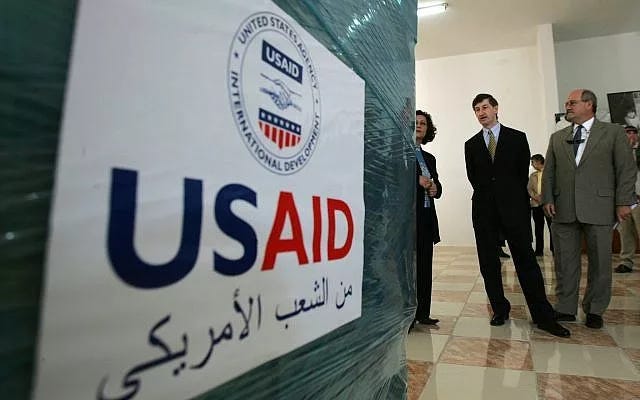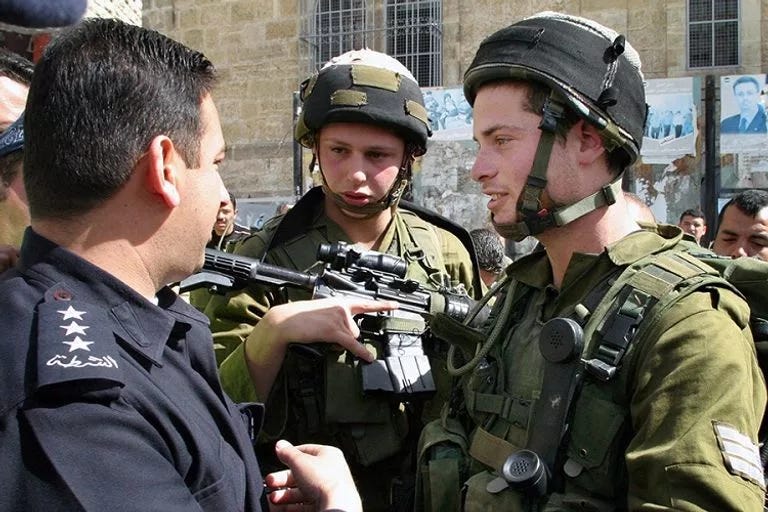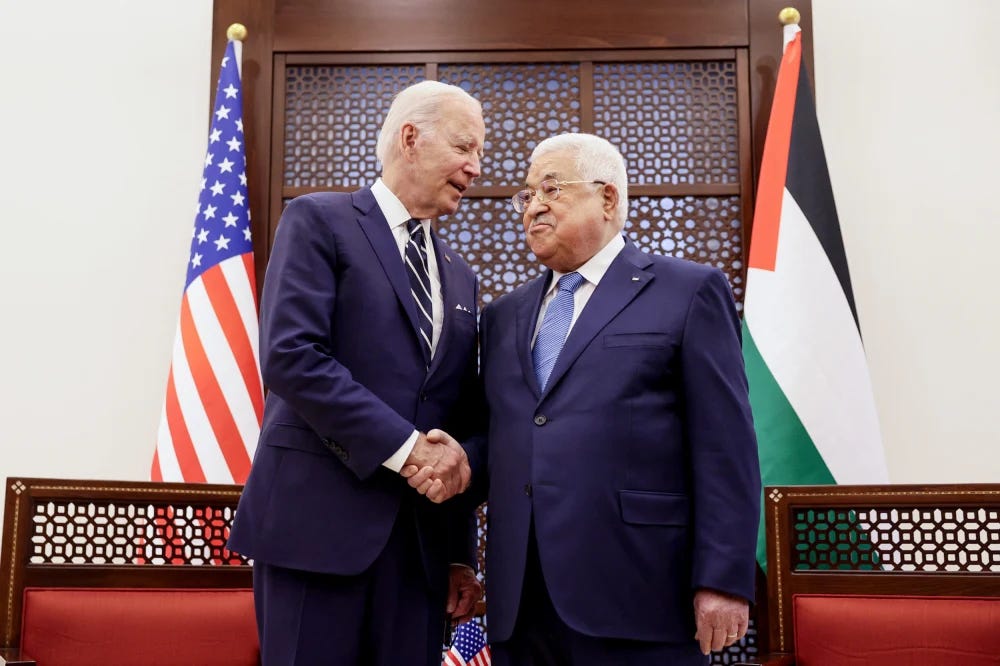For 25 years, across successive Democratic and Republican administrations, the United States has played the role of a mediator lacking neutrality and integrity. Despite its claims of working toward peace and justice, as seen in some stages of the hollow “peace process” established during the Clinton era and continued by subsequent administrations, its actual role has always served only Israeli interests.
American mediation in the Palestinian-Israeli negotiations relied on two assumptions that together shaped the primary determinant of the Palestinian cause and its historical turning points. First: that the peace process could move forward despite the significant imbalance of power between Palestinians and Israelis, and that some rights could be achieved for the weaker party in this context.
Second: that the internal Palestinian arena could be subdued to align with the requirements of this process, meaning that the people might follow their authority in its negotiation rounds and the demands of the phase. To achieve these two assumptions, successive American administrations since the Clinton era used the traditional pressure tool: money.
How has American aid affected the shaping of the contemporary history of the Palestinian cause? What is the difference between the funding provided by Republican administrations, based on a security mindset, and that of Democrats, which hides behind humanitarian needs, governance, and economic support? What are the key conditions and tools that successive American administrations used to achieve their goals through funding programs?
This article sheds light on these questions and others within the framework of the “Diplomacy of the Two Ropes” file, attempting to explore the complex links between American financial support and the political and economic repercussions on the course of the Palestinian cause.
Oslo and the Sin of Hollow Institutions
Bill Clinton, in the 1990s, through the formal peace process under which he brought together Yasser Arafat representing the PLO with Israeli Prime Minister Yitzhak Rabin and later his successor Shimon Peres, laid the foundation for what could be considered the cheapest form of occupation in history.
Through agreements considered “transitional temporary agreements,” the path was supposed to be paved for resolving permanent issues such as settlements, borders, resources, and refugees. However, this track marked the beginning of the decline of the Palestinian cause, as Clinton reduced the value of the PLO as a symbol of resistance against the occupier, transforming it into a security force responsible for managing the affairs of the occupied territories, including maintaining security even for the occupier, without any significant rights regarding actual sovereignty over land or resources.
After the establishment of the Palestinian Authority, Clinton devised a tight plan to subject it to the conditions of the peace process, especially regarding the security of “Israel” and regional political stability. One of the most prominent of these requirements was linking the Palestinian Authority to a funding aid program, making American and associated international grants the sole lifeline for the newly established authority.
In the early 1990s, American aid packages flowed into Palestinian Authority institutions after the signing of the Oslo Accords. The stated goal of this aid was to strengthen the Palestinian economy, build state institutions, and improve services and infrastructure, to ensure public satisfaction with the new authority, as well as to enable security and stability that would positively reflect on “Israel’s” prosperity.
After the mutual recognition letters were exchanged between the PLO (and later the Palestinian Authority) and the Israeli government, and the signing of the Declaration of Principles on September 9, 1993, Western countries quickly provided funding to the fledgling Palestinian institution seeking to achieve “peace” within five years of the agreement.
Forty-six countries, including the United States, donated $2.4 billion to support the Palestinian Authority at its inception through what became known as the “Holst Fund,” through which the U.S. contributed $375 million and placed another $125 million as the maximum for repayable loans and grants.
However, these funds did not reach the Palestinian Authority directly. The Clinton administration maintained control over the distribution of aid through an American intermediary, the USAID program, which to this day continues to handle the disbursement of American donations and aid according to the conditions of successive American administrations and programs aligned with their political objectives.
Between 1994 and 2010, during the administrations of Bill Clinton and George W. Bush, American aid to the Palestinian Authority amounted to approximately $3.4 billion, disbursed through USAID, which directly supervised the allocation of these funds to public contractors (80%) and private institutions (20%).
The program primarily aimed to enhance the private sector, support Palestinian Authority ministries, and meet the basic needs of Palestinians in both the Gaza Strip and the West Bank, with an annual average of $85 million in economic aid. At the same time, successive American administrations denied providing any form of military assistance to Palestinians, regardless of its nature.

A review of the initial distribution of aid from the U.S. Treasury to the Palestinian Authority budget reveals a clear variation in the programs and goals served by such funding. Water and infrastructure problems topped the priorities, with over $1.2 billion allocated to this sector over 16 years.
Next came the PA budget with $890 million, followed by support for the private sector and programs for democracy and good governance, which received approximately $347 million and $374 million, respectively. Meanwhile, the education and youth program ranked last, receiving no more than $115 million during the administrations’ terms.
Fighting “Palestinian Terrorism” with Palestinian Hands
American grant and aid programs, on one hand, and severe Israeli restrictions, on the other, prevented the emergence of an independent Palestinian economy capable of supporting any political decision stemming from Palestinian national interests. However, the most dramatic shift in this equation began to appear in 2006–2007, after Hamas won the legislative elections and took control of the Gaza Strip.
Since then, American aid programs became a tool to fragment the Palestinian body, striking at the heart of the revolutionary liberation project, which the official institutions abandoned while its popular roots remained vibrant. This weakened the performance of the resistance, isolated it, and undermined its capabilities, especially in the West Bank.
Yet, the history of funding the so-called “fight against Palestinian terrorism” dates back to earlier years, as the American funding program under all administrations refused to fund any revolutionary form of Palestinian institutions, especially the PLO, which once symbolized Palestinian resistance.
At the same time, “Israel” received military funding for every “economic aid” package to the PA, under the banner of “fighting terrorism.” Since the Clinton era and within the framework of the Wye River Memorandum signed between the PA, the Israeli government, and the Jordanian government in 1998, the PA received $400 million for governance reform and economic restructuring, while Jordan received $300 million to ensure implementation of the agreement, and the occupying government received $1.2 billion under the heading “fighting terrorism.”
Once the peace process stabilized with the signing of Oslo, the establishment of the new Palestinian Authority, and the injection of funds into its institutions, the Clinton administration began preparing the official U.S. terrorism list, classifying active Palestinian liberation movements at the time as terrorist groups, including Hamas, Islamic Jihad, and the Popular Front for the Liberation of Palestine.
In 2002, George W. Bush’s administration added the al-Aqsa Martyrs Brigades during the peak of the Second Intifada, coinciding with preparations to invade Iraq and Afghanistan.
The specter of “Palestinian terrorism” haunted any U.S. grant or aid directed to Palestinians. Although the George W. Bush administration regained some confidence in the PA after Yasser Arafat’s death and Mahmoud Abbas’s assumption of power—when some grants began to flow directly to support the authority instead of specific projects—the U.S. pledged $350 million (including $200 million for 2005 and $150 million for 2006), a figure close to the European Union’s pledge of $330 million for 2005.
Nevertheless, U.S. administrations, supported by Congress, retained the option to transfer aid directly to “Israel” to cover the PA’s debts. This happened in 2005 when the Bush administration transferred $20 million directly to the Israeli government to cover PA debts for basic services in the West Bank and Gaza, fearing that some of the funds might leak to “terrorist groups.”
Funding was the most prominent tool used by the George W. Bush administration before the outbreak of the second Palestinian Intifada, linking American grants to the PA to conditions related to tightening security control. Aid increased for initiatives labeled “security reform,” which, in practice, meant cracking down on any popular resistance or struggle against the occupation.
Bush’s administration saw rare alignment between the U.S.’s global “War on Terror” after the 9/11 attacks—with its new concepts and rules—and Hamas’s rise to power in the 2006 elections and subsequent control of Gaza in 2007.
This period saw American funds allocated to strengthening the PA’s security apparatus and financing “counterterrorism” programs, including intensive training of new or specially appointed security forces. According to congressional reports, some of this training—especially those involving weapons and explosives—took place on Jordanian soil.
Although the Obama administration, particularly by 2012, reduced these trainings and shifted to offering advice to PA security forces, the Trump administration revived these programs. In 2018, the U.S. established the United States Security Coordinator (USSC) office to oversee the training of PA security forces for the purpose of “combating internal Palestinian terrorism,” comprising an international team that included American, Canadian, British, Turkish, Italian, and Dutch forces.
Despite Obama’s hesitance about direct training of PA security forces, U.S. aid saw significant tension and decline during his and later Trump’s tenure. Statistics from USAID and the U.S. government showed a drop in aid volume and dramatic changes in disbursement channels.
In Obama’s first year (2012), nearly all funding went to law enforcement and governance programs for the PA, totaling $100 million, alongside $396 million in economic aid focused on basic needs, private sector development, and infrastructure.
The following year, Obama introduced a new disbursement channel for counterterrorism under “war expenses,” amounting to $10 million, while economic aid dropped to $357 million.
Conditions worsened as economic support for the PA declined in favor of rising military aid, mainly for counterterrorism, peaking under Trump’s presidency. In 2016, $206 million was allocated for military expenses related to counterterrorism, with $0 for pure economic assistance.
Trump’s administration also doubled Obama’s counterterrorism and demining operations budget, allocating $2 million in 2016. Though these figures dropped between 2017–2019, counterterrorism-related aid to Palestinian territories remained high compared to economic aid, which ranged from $165 million in 2017 to $215 million in 2018. In 2019, U.S.-Palestinian relations nearly collapsed over collective sanctions imposed by Trump for rejecting the "Deal of the Century."
In its 2018 justification to Congress for transferring $35 million to PA institutions, especially the Interior Ministry, the Trump administration stated the funds were for training PA security forces and providing technology and equipment to maintain stability in the West Bank, thereby securing “Israel.”
Yet a Congressional Research Service report indicated some of the funds were also used to strengthen the PA’s internal judicial system and to pursue Hamas and Islamic Jihad activists in the West Bank.
Thus, security aid to PA forces continued. In 2018, former U.S. envoy to “Israel” Dan Shapiro described this aid as enhancing the PA’s ability to thwart “Palestinian terrorist operations” on behalf of “Israel.” Without these efforts, he said, “Israel” would incur huge costs in hospitals and utility services for Palestinians.
Trump’s term saw a significant decline in U.S. aid to the PA, using funding as blackmail to force Palestinian acceptance of the “Deal of the Century,” which aimed to eliminate the Palestinian cause altogether.
This coincided with Congress passing the “Taylor Force Act” in 2018, granting the U.S. administration authority to cut aid if it suspected it was being used for activities it deemed “terrorism,” notably the stipends the PA paid to families of prisoners and martyrs who carried out attacks against Israelis.
The law didn’t just demand an end to payments to these families but also required public condemnation and prosecution of such acts, and the eradication of their support networks in PA-controlled areas of the West Bank.
Crippling Conditions: Israeli Security First
Congress and successive administrations imposed numerous conditions on PA funding, including banning salaries for PA employees in Gaza after Hamas took control in 2006, and prohibiting funding for the PLO or any affiliates.
Obama played a "carrot and stick" game with the PA, tying financial support to the Palestinian territories and population’s ability to coexist with “Israel,” including settlement expansion and security demands.
He continued Bush’s strategy of financially dividing Palestinians, where those under Fatah’s PA received conditional aid tied to security cooperation with “Israel,” while those in Hamas-controlled Gaza received none.
The U.S. also refused to fund any unity government involving Hamas and demanded that President Abbas ensure any PA government recognized “Israel’s” right to exist and honored prior agreements if aid were to continue.
Both Bush and Obama punished Palestinians for electing Hamas, cutting financial support and pressuring Europe and Western governments to do the same. These pressures, combined with geopolitical factors, deepened the siege on Gaza and caused persistent economic decline.
Meanwhile, aid flows to the West Bank’s PA increased, tied to enhanced security cooperation with “Israel.”
One of the harshest U.S. conditions involved Palestinians' right to join the international community and pursue justice. U.S. administrations threatened to cut aid if Palestine gained membership in the UN or any of its agencies—except UNESCO.
They also threatened to cut aid to any future Palestinian state unless it showed good-faith intentions to coexist with “Israel,” combat terrorism, and participate in a comprehensive peace process.
Under Obama, Congress tied some aid—especially for reform and economic prosperity—to the PA avoiding prosecution of “Israel” at the International Criminal Court. When the PA went to the ICC in 2015, the U.S. immediately deducted aid.
Successive administrations opposed any international attempts to grant Palestinians basic rights, especially self-determination and statehood. The most recent example was Biden’s April 2024 veto at the UN Security Council amid a genocidal war against Palestinians.
The U.S. veto list includes measures to uphold Palestinians' right to life and protection from extermination, the sanctity of their land, and the right to self-determination in a sovereign state with Jerusalem as its capital.
Trump’s administration imposed harsh punitive policies to fulfill Israeli demands. In 2018, it cut most PA aid and 80% of funding to UNRWA, aiming to promote the “Deal of the Century” which proposed a crippled Palestinian state and unprecedented Israeli expansion over settlements, the West Bank, and Jerusalem as a unified capital.
Trump said: “Those who receive millions in American aid will get nothing unless they come to the negotiating table,” while relocating the U.S. Embassy to Jerusalem—a symbolic move endorsing Israeli control.
When Biden assumed office in 2020, some aid resumed. In 2020 and 2021, $75 million was allocated each for economic support and anti-violence/terrorism programs.
By 2022, aid improved slightly to $219 million in economic support and $40 million for law enforcement and governance. In 2023, economic aid totaled $185 million, with $33 million for law enforcement and $1 million for anti-terrorism programs. Despite this relative improvement, all aid remained conditioned on Israeli security and peaceful coexistence with the occupying state.
Though Biden resumed some aid programs, he didn’t rebuild the diplomatic bridge Trump demolished when he closed the Palestinian embassy in Washington. Relations remained under U.S. dictates, refusing even direct dialogue.
Despite Biden’s return to the “two-state solution” rhetoric—now nearly impossible and centered on land swaps favoring settlers—he took no serious steps to relocate the U.S. Embassy to Tel Aviv. Instead, his administration reaffirmed Trump’s recognition of Jerusalem as “Israel’s” capital, saying the city’s final status remains “negotiable,” leaving things unchanged.
Refugees: Another Leverage Tool
The UNRWA file—cementing Palestinian refugees’ status and right of return—faced continuous American blackmail. Since its 1950 founding, the U.S. contributed nearly $6 billion to the agency, which millions of Palestinians rely on.
UNRWA depends on UN member state donations, particularly from the West, and some institutional and individual donors. U.S. aid law since 1961 (Section 301c) requires assurance that aid doesn’t go to the "Palestine Liberation Army" or any armed group engaged in “terrorist acts” against Israelis.
In 2010, Obama’s administration required UNRWA to submit detailed reports on its activities and expenditures to assess compliance with the 1961 law.
By 2015, new conditions included altering educational curricula and summer programs to avoid any “anti-Israel” content. UNRWA was also required to ensure it didn’t serve individuals or groups classified as “terrorists,” reporting regularly to Congress.
Trump directly blackmailed UNRWA by halting all aid and restricting its programs geographically to Jordan, the West Bank, and Gaza—excluding Syrian and Lebanese Palestinian refugees, essentially stripping them of refugee status and return rights in violation of international law.
Biden resumed limited aid but again suspended it in 2024 following Israeli claims that 12 UNRWA staff participated in the October 7 attack. Sixteen donors then cut $440 million, worsening Palestinians’ humanitarian crisis. Biden’s administration suspended aid for at least one year.
At the end of his presidency and after the failure of the 2000 Camp David summit, Clinton played his final card with the “Clinton Parameters,” proposing the annexation of major Israeli settlements—home to 80% of settlers (about 69 settlements).
In exchange, Palestinians would receive the remaining West Bank and Gaza land to establish a state. But these lands were fragmented and encircled by settlements and bypass roads financed by Clinton’s administration.
This proposal continues to shape U.S. policy, especially regarding Palestinians’ right to self-determination, confining them to a form of crippled statehood lacking true sovereignty, a viable economy, or independent decision-making.
The contemporary Palestinian decline began under Clinton, with Oslo marking a pivotal dark chapter. Through it, the U.S. seized control of the Palestinians’ fate, stripping them of their right to resist and determine their destiny, even as international law guaranteed those rights. Meanwhile, “Israel” rid itself of governing Palestinians while continuing occupation without recognizing Palestinian rights or sovereignty.





